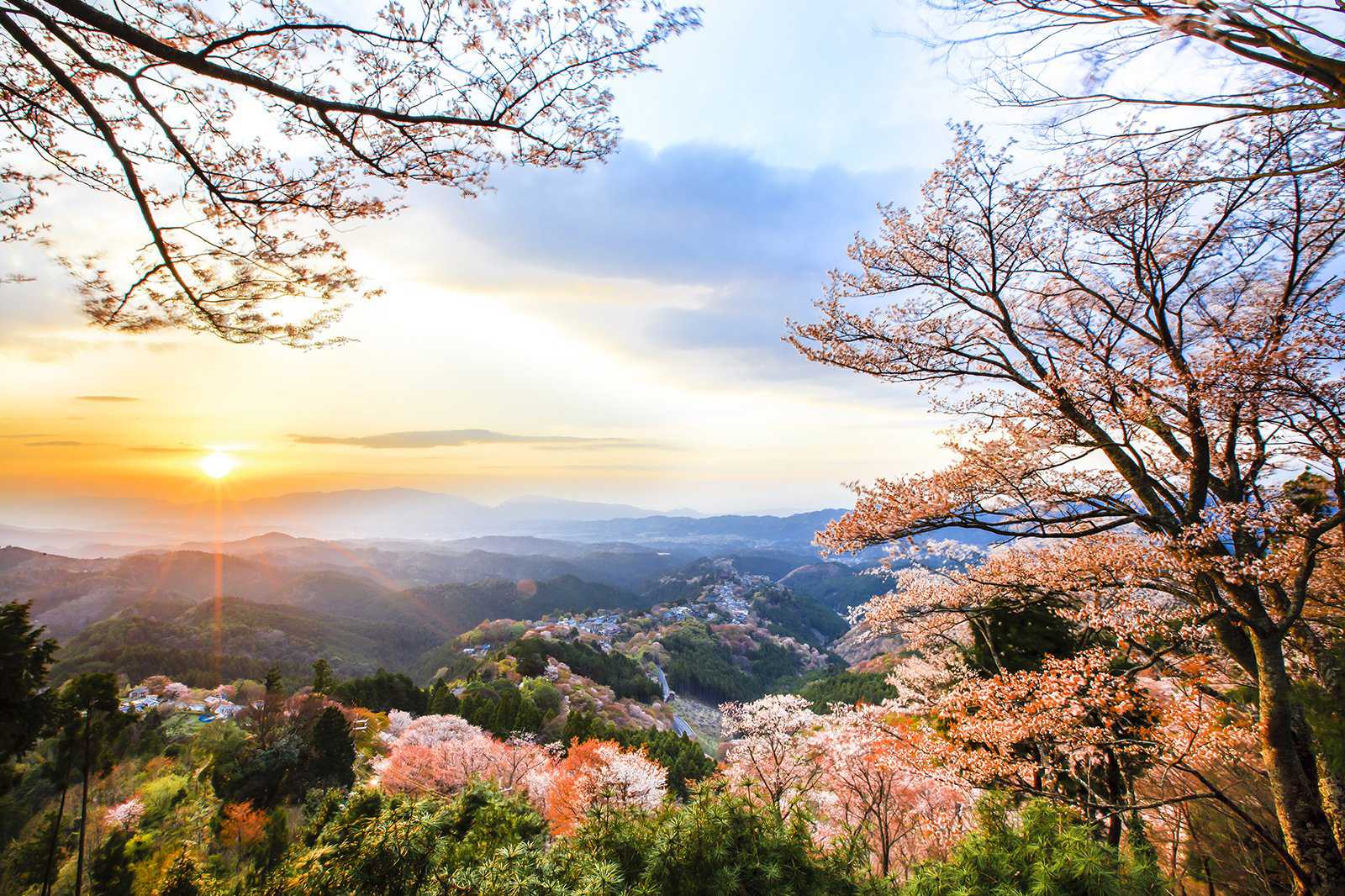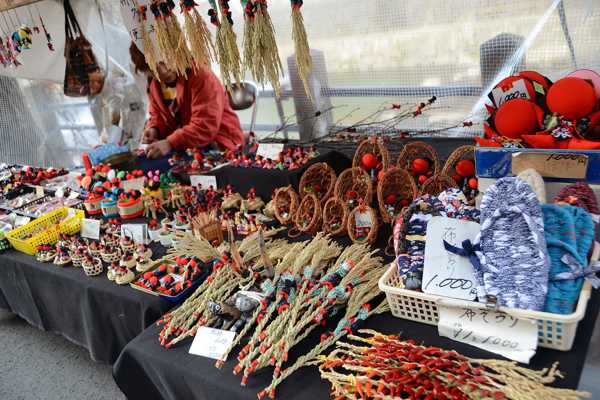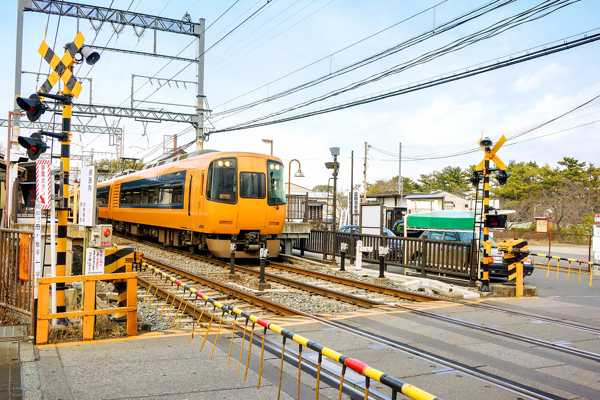Exploring the best things to do in Nara, once known as Heijo-kyo and the first capital of Japan (710-794), reveals a treasure trove of cultural and historical landmarks. This city is home to 3 of Japan’s World Heritage Sites and many impressive shrines, temples, and ruins. Nara is blessed as it somehow escaped the widespread destruction during WWII, plus it has managed to preserve its historic charm very well.
If you don’t have much time to spare, a visit to Nara Park, where hundreds of Sika deer roam, is definitely a must. Key attractions in Nara include Todaiji Temple, Kofukuji Temple, Kasuga Taisha Shrine, Heijo Palace, Nara National Museum, and the Isuien Japanese Garden.
What are the best things to do in Nara?
- 1
Nara Park
Beautiful views and majestic wildlife

- Couples
- Families
- History
Nara Park, covering an area of over 600 hectares, is one of the biggest municipal parks in Japan and lies in the heart of the city. Locals love to come to the park, especially to the hanami spot, to view the cherry blossom in spring. Look for the friendly deer that run freely inside the park, expecting people to feed them sembei (deer crackers). These deer have long been the symbol of Nara and according to Shinto belief they are regarded as the messengers of the gods so no one dares harm them.
There are many interesting historical landmarks in and around the park, such as Kofukuji Temple, Todaiji Temple, Kasuga Temple, and the Nara National Museum.
Location: Nara 630-8211, Japan
Phone: +81 (0)74-222-0375
Map - 2
Todaiji Temple
Home to the Great Buddha of Nara

- History
- Photo
Todaiji Temple, founded by Emperor Shomu, is probably the most famous attraction in Nara, known for its magnificent bronze Nara Daibutsu statue (or the Great Buddha of Nara). Like many historical places in Japan, the statue and its huge wooden hall and building have suffered damages several times and have subsequently been restored.
The current Daibutsu is one of the largest bronze statues in the world and was rebuilt by the Tokugawa Shogunate in 1692. Todaiji Temple is listed as a UNESCO World Heritage Site. Incredibly, the entire temple was built without a single nail being used.
Location: 406-1 Zoshicho, Nara 630-8587, Japan
Open: April–October: daily from 7.30 am to 5.30 pm. November–March: daily from 8 am to 5 pm
Phone: +81 (0)74-222-5511
Map - 3
Kofukuji Temple
Nara's iconic pagoda

- History
- Photo
Kofukuji Temple is the beautiful 5-story pagoda you’ll often see in tourist brochures and promotional materials of Nara City. This pagoda, one of the city’s symbols and widely known throughout the country, was last rebuilt in 1426. Founded in 669 by the Fujiwara family, a powerful family in Japan, Kofukuji Temple was first located in Kyoto and was then moved to the current location in Nara Park. At that time there were 175 buildings inside the temple; sadly only a few survived, including the 2 pagodas.
Visit the Kokuhokan (the temple’s Treasure House) to see many antique statues, some dating back as far as the 8th century. Kofukuji was named a UNESCO World Heritage Site in 1998.
Location: 48 Noboriojicho, Nara 630-8213, Japan
Open: Daily from 9 am to 5 pm
Phone: +81 (0)74-222-7755
Map - 4
Kasuga Shrine
Lantern-lit pathway to tranquility

- Couples
- History
- Photo
A visit to the Kasuga Shrine (Kasuga Taisha Shrine), a UNESCO World Heritage Site and one of Japan’s oldest Shinto shrines, is a must-do when in Nara. You will notice many lanterns lining the path leading up to the main building. There are many more of them inside the shrine; it’s said there are 2,000 stone lanterns and 1,000 hanging bronze ones in total.
Kasuga Shrine is strongly linked to the powerful Fujiwara clan, which enjoyed strong connections with the Imperial family. It was founded in 768 with the current building last rebuilt in 1863. For an extra fee, tourists can admire many vintage items such as swords and traditional costumes inside the treasure house (homotsuden).
Location: 160 Kasuganocho, Nara 630-8212, Japan
Phone: +81 (0)74-222-7788
Map - 5
Manyo Botanical Garden
Witnessing the breathtaking spectacle of wisteria in bloom in the spring

- Couples
- Families
- Photo
Manyo Botanical Garden (rokuen) offers an enchanting display of native Japanese flora. Housing hundreds of diverse plants, it's a lush oasis where visitors can admire a variety of species, from Japanese figs and Japanese blue oaks to hydrangea and rabbit-ear iris. Other highlights include dianthus superbus, Chinese bellflowers, willows, Japanese cedars, Japanese plums, and cluster amaryllis.
Many locals come in April and May to see the wisteria in full bloom. The botanical garden is located next to historic Kasuga Shrine in Nara Park.
Location: 160 Kasuganocho, Nara 630-8212, Japan
Mapphoto by Mx. Granger (CC0 1.0) modified
- 6
Nara National Museum
A journey through Japan's artistic heritage

- History
- Photo
Nara National Museum (Nara Kokuritsu Hakubutsukan) exhibits many priceless Japanese Buddhist artworks, scrolls, paintings, as well as archeological items from various historical eras.
The highlight of the museum is the Shosoin Treasure House. Shosoin is unique because it houses over 9,000 pieces, the world’s largest collection of 8th century "Silk Road" exhibits. The collection includes musical instruments from Tang China, lapis lazuli stones from Türkiye, cut-glass bowls from Persia, cups made from rhinoceros horn from India, and many items from Japan’s own imperial collections. The annual Shosoin exhibition usually runs for a few weeks from October to November.
Location: 50 Noboriojicho, Nara 630-8212, Japan
Open: Daily from 9.30 am to 5 pm
Phone: +81 (0)50-5542-8600
Mapphoto by 663highland (CC BY-SA 3.0) modified
- 7
Yakushiji Temple
Sacred spaces and Buddhist art

- Budget
- History
- Photo
A temple dedicated to the "Buddha of medicine," Yakushiji Temple was built in 680 and later relocated to its current site after Nara was named the capital. The temple is also known for its splendid collection of Buddhist artworks, including Buddhist bronze sculptures and a beautiful painting from the 8th century of Kichijoten, or Sri-mahadevi, the Buddhist goddess of peace, happiness, and beauty.
There are an impressive number of buildings inside Yakushiji, such as the original 8th-century east pagoda and reconstructed west pagoda, as well as the kodo (lecture hall) which was rebuilt in 1852, and the kondo (main hall) constructed in 1976.
Location: 457 Nishinokyocho, Nara 630-8563, Japan
Open: Daily from 9 am to 5 pm
Phone: +81 (0)74-233-6001
Map - 8
Katsuragi City Sumo Museum Kehayaza
Birthplace of sumo

- History
- Photo
Located in nearby Katsuragi City, this 2-floor museum is devoted to the world of sumo wrestling. It was opened in 1990 and displays about 12,000 interesting items, all related to sumo, such as several kesho-mawashi (an ornate, embroidered silk belt worn by the wrestlers), geta (Japanese wooden sandals), historical documents of sumo, old photos, and paintings.
The first floor presents a life-size sumo ring but don’t expect a real match here. It is said that sumo was invented here, so fans of the sport enjoy making the trip to this museum. You can find the sumo museum near Kintetsu Taimadera Station.
Location: 83-1 Taima, Katsuragi, Nara 639-0276, Japan
Phone: +81 (0)74-548-4611
Mapphoto by KENPEI (CC BY-SA 3.0) modified
- 9
Isuien Japanese Garden
A haven of natural beauty

- Couples
- History
- Photo
The beautiful Isuien Japanese Garden is a good escape from Nara’s major tourist attractions. The garden is divided into 2 sections; the mid-17th century front garden and a rear garden which was built later in 1899. The 2 gardens are connected by an attractive walkway, creating a continuous, harmonious landscape.
This haven also houses a few small tea houses as well as a very interesting museum that has a fascinating collection of vintage pottery, ceramics, and arts and crafts from Korea and China.
Location: 74 Suimoncho, Nara 630-8208, Japan
Open: Wednesday–Monday from 9.30 am to 4.30 pm (closed on Tuesdays)
Phone: +81 (0)74-225-0781
Map - 10
Heijo Palace
Once the grand home of emperors

- History
- Photo
Heijo Palace was the emperor’s residence for less than a century before it was completely abandoned when the capital was moved to Kyoto. One of the highlights of the Heijo Palace’s grounds is the life-sized replica diplomatic ship that carried Japanese nobles to China in the 8th century. The palace itself serves as a museum with a good range of exhibits on display.
There are several buildings in the palace grounds including the residential quarters of the emperor, bureaucratic offices, the Daigoku-Den hall for national ceremonies, traditional gates, Japanese gardens, and courtyard. Heijo Palace is one of Nara’s UNESCO World Heritage Sites. It’s a 15-minute walk from Yamato-Saidaiji Station.
Location: Sakicho, Nara 630-8003, Japan
Open: Tuesday–Sunday from 9.00 am to 4.30 pm (closed on Mondays)
Phone: +81 (0)74-230-6753
Mapphoto by Saigen Jiro (CC0 1.0) modified
- 11
Rice terraces in Asuka
A beautiful 1-day getaway

- Couples
- Families
- Photo
The rice terraces in Asuka are a vibrant part of the beautiful countryside surrounding the Asuka village, which lies to the south of Nara. This village was an ancient capital before the Nara Period and has many historical sites including ruins, imperial tombs, temples, shrines, and carved stones.
Many of the colorful rice fields are located on terraced slopes. The traditional village is perfect for a day of walking or cycling. It is popular as a getaway spot for those who want a break from the crowded touristic landmarks. Head to the village of Inabuchi for the best views.
Location: Asuka, Nara Prefecture, Japan
Mapphoto by 8-hachiro (CC BY-SA 4.0) modified
- 12
Horyuji Temple
Oldest wooden structures in the world
- Couples
- History
- Photo
Read moreHoryuji Temple (also known as Ikaruga-dera Temple) was founded by Prince Regent Shotoku (574-622) and is considered Japan’s oldest Buddhist Temple. Some of the buildings within the temple grounds are considered the world's oldest existing wooden structures. Horyuji features an original wooden kondo (main hall) that is more than 1,300 years old, a 5-story pagoda, and many valuable Buddha images and sculptures.
Besides being one of the 7 great temples of prefecture and the seat of the Shotoku sect of Buddhism, Horyuji Temple is credited to be the first UNESCO World Heritage site in Japan. It's about a 15-minute train ride from JR Nara station to JR Horyuji station, and then a 20-minute walk to the temple.
Location: 1-1 Horyuji Sannai, Ikaruga, Ikoma District, Nara 636-0115, Japan
Mapphoto by Reggaeman (CC BY-SA 3.0) modified
- 13
Yoshino Mountain
Enjoying the cherry blossoms

- Couples
- Families
- Photo
Located approximately 90 minutes by train from Nara, Yoshino Mountain is a vibrant destination that comes alive every spring. It's a beloved site for hamami, the traditional Japanese custom of enjoying the transient beauty of cherry blossoms. The mountain's slopes are adorned with over 10,000 cherry trees, creating an enchanting pink panorama.
Due to the altitude, the trees blossom longer here. Instead of the average 2-week bloom seen at lower locations, visitors here can marvel at the exquisite blossoms for an extended duration.
Location: Yoshinoyama, Yoshino, Yoshino District, Nara 639-3115, Japan
Map



















